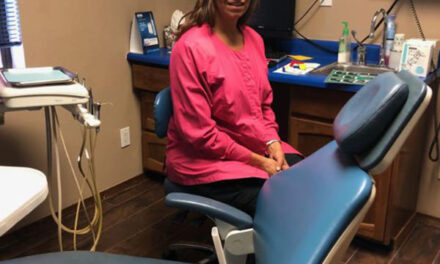Tomé
At the Rio Grande Utility Sewer Plant in Tomé, Bob Towle, plant operator, climbs ladders to oversee the sewage purification process bubbling below, as bacteria dissolves waste and produces a brown foam on the surface of the water.
Inside a small brick building nearby, a laboratory tests the quality of the water. Monitoring wells at the site are tested every three months and samples of the water in the tanks are tested daily as required by state and federal agencies to see if the system is working properly, Towle said.
Towle was doing his job one day last July when a group of Tomé residents came to see him to complain that sewer water had flooded the sacred cemetery situated just west of the plant.
Towle insists that the way the plant is constructed, and with all of the rules and regulations governing the plant, untreated sewer water could not have flooded the cemetery.
The process used to treat sewage dates back to the 1930s and hasn’t changed much through the years, said Ron Hay, operations manager for Rio Grande Utilities.
Bacteria dissolves the waste, which is then treated with chlorine. Then the treated water goes into “percolation ponds” next to the plant which take the water to the aquifer.
Left-over liquid that contains bacteria — known as “sludge” — is trucked to a site near the Manzano Expressway that is regulated by the state and federal governments.
The sludge is plowed into the ground and mixed in with the soil, Davey explained. The sludge site is fenced with a locked gate, but the liquid is harmless to people, he said.
He said he has had no complaints about odors around the plant until the recent one from the Historic Tomé-Adelino Neighbor-hood Association.
The water used to irrigate the cemetery trees also is routinely used at VIA parks and at schools at night, and “if sewer water was escaping, people would have called the VIA to complain,” Davey said.
Hay said it’s possible that residents can smell odors from the plant for five or 10 minutes every hour, as sewage is pumped into the plant.
Committee members also told the VIA they do not like the square “percolation ponds” that contain treated sewer water and sit next to the plant.
“They expressed concern about the ponds. So we’ve gone to a ground application system, taking the treated water two miles east of the cemetery. They’re concerned about the ponds overflowing. It’s not that kind of pond. Geotechnical tests showed the water flows south and west. It follows the course of the river, which runs south. The report was done for us and given to the Environment Department. We’re trying to line them (the ponds) or move them.
“The intention is the ground application process will take the water away from the plant. The ponds are an emergency backup system if needed — we’d use some of the existing ponds as an emergency backup and fill in the rest of them. The other thought is we could line those ponds. It’s storage, if there’s an emergency. It’s treated water. They do not hold sewage ever. The ponds are designed to percolate the water into the aquifer. New Mexico engineers certify the water once it goes back into the ground.”
Davey confirmed that the VIA is trying to sell the plant to California Water, out of Bakersfield, “which has more expertise running sewage plants.
“We have the opportunity to sell to a company that is built around ownership of small community systems.”
Davey was the VIA’s secretary-treasurer when the company built the sewer plant.
He said it would cost the VIA too much to move the plant now, but he is willing to work with the neighbors to lessen their concerns, perhaps by setting up small plants, rather than expanding the present one and by moving the ponds.
Davey said he understands the concerns of the neighborhood association, but insists that the sewage plant is operating safely and that no untreated sewage water has escaped onto the cemetery.
“I do not want to get people needlessly upset. I hope we can work something out,” Davey said.














